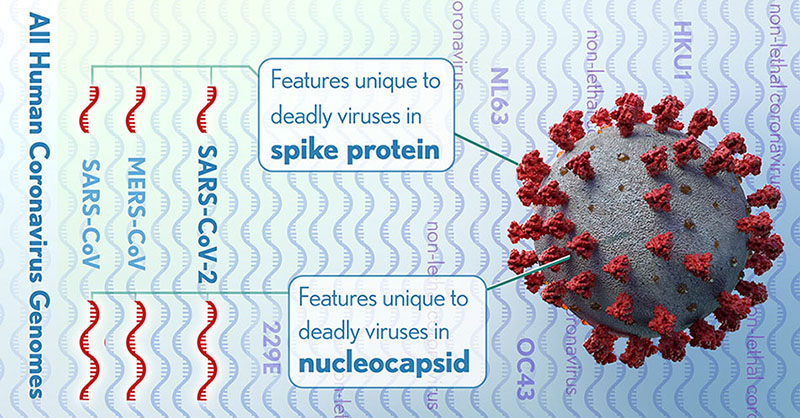IRP researchers identify key genomic features that could differentiate SARS-CoV-2 from other coronaviruses that cause less severe disease
A team of researchers from the National Library of Medicine (NLM), part of the National Institutes of Health, identified genomic features of SARS-CoV-2, the virus that causes COVID-19, and other high-fatality coronaviruses that distinguish them from other members of the coronavirus family. This research could be a crucial step in helping scientists develop approaches to predict, by genome analysis alone, the severity of future coronavirus disease outbreaks and detect animal coronaviruses that have the potential to infect humans. The findings were published this week in the Proceedings of the National Academy of Sciences.
COVID-19, an unprecedented public health emergency, has now claimed more than 380,000 lives worldwide. This crisis prompts an urgent need to understand the evolutionary history and genomic features that contribute to the rampant spread of SARS-CoV-2.
“In this work, we set out to identify genomic features unique to those coronaviruses that cause severe disease in humans,” said Dr. Eugene Koonin, an NIH Distinguished Investigator in the intramural research program of NLM’s National Center for Biotechnology Information, and the lead author of the study. “We were able to identify several features that are not found in less virulent coronaviruses and that could be relevant for pathogenicity in humans. The actual demonstration of the relevance of these findings will come from direct experiments that are currently getting under way.”

The full genomes of all human coronaviruses were aligned to identify regions (red) that might code for lethal differences in the virus that causes COVID-19 as well as SARS and MERS. These differences could be targets for testing or treatments.
This page was last updated on Friday, January 21, 2022